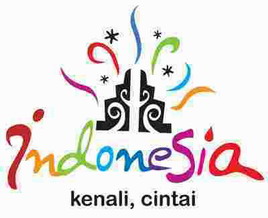Using the question word “where” in Indonesian
A lot of things in Indonesian are (arguably) much simpler than English. Many questions words that we have in English are simplified into 1 question word in Indonesian. However, Indonesian treat the question word “where” much differently.
There are 3 kinds of “where” in Indonesian language. First one is ke mana (to where), second one is dari mana (from where), and last one is di mana (at where). All of them must be used at the right time.
If you are talking about going to somewhere else, you will use ke mana. For example: Besok kamu mau pergi ke mana? (Where will you go tomorrow?)
If you are talking about coming from somewhere, you will use dari mana. For example: Kamu berasal dari mana? (Where do you come from?)
If you are talking about staying at a place, you will use di mana. For example: Kamu tinggal di mana? (Where do you live?)
To sum up, there are 3 kinds of “where” in Indonesian language. Use them correctly!
Claiming Possession in Indonesian Language
Before you start reading this, make sure that you have been introduced or have introduced yourself to the function of pronoun in Indonesian language. I will put it in a very simple way, when you have an Indonesian noun, you can add a pronoun right after that to claim the possession of that noun.
For example:
In Indonesian, teman means friend and Saya means I.
When you combine them together and put the pronoun right after the noun, it will become something like this –> teman saya.
Now, in Indonesian, pronoun will not change in order to express possession. Hence, teman saya will mean something like ‘my friend’.
Some people got around by thinking of it as ‘friend that belongs to me’. You can try to understand it in different ways and that’s not a problem.
The tricky part is when we are talking about more than just 1 level possession. How if you want to say my father’s friend?
It will become something like this –> Teman bapak saya
Again, you can think of it as “my father’s friend” or as far as “friend that belongs to the dad that belongs to me”.
This might be confusing at first, but try to experiment with different nouns and pronouns. I am sure you will get around quickly.
Oh, I almost forget! You should look search for the pronoun first and then works it out from right to the left.
Which one is correct: Bahasa or Bahasa Indonesia?
Before you start to learn the Indonesian language, it is important to know whether you actually know the name of the language. Some people called Indonesian language as “Bahasa”, is this correct?
Well, to set it straight, Bahasa actually means language. Now, imagine if you say, “I am learning Bahasa or I want to learn Bahasa” to the Indonesian native. The first thing they will ask you is: “Which language do you want to learn? Mandarin or Japanese?”
With that in mind, if you used to call the Indonesian language as Bahasa, maybe you can start calling it as “Bahasa Indonesia” which simply means Indonesian language. That way, you can always be sure that you are in the same page as Indonesian native.
Children’s Day in Korea (May 5)
In South Korea, May 5 is officially recognized as Children’s Day (어린이날). Parents often give presents to their children, as well as spend time with them. The children are taken on excursions to zoos, museums, and various venues of children-oriented entertainment.
From Jinju, many people gathered to promote and to improve the social status of children and encourage adults to teach awareness. The predominant figure, Bang Jeong Hwan (방정환) greatly contributed the enhancement of participation from the Korean intellectuals, while the Labourer’s Day also tapped together and moved the day toward May 5 . Bang Jeong Hwan first coined the modern Korean word for children, eorini (어린이).
It is one of the most exciting national holidays in Korea which is full of people who want to enjoy Korea’s beautiful spring day with their lovable family members.
– Ashley (Korean Teacher)
Bulgogi: The king of Korean BBQ
The word Bulgogi (불고기) literally means “fire meat” in Korean, which refers to cooked marinated meat, applied old traditional grilling techniques using gridirons or perforated dome griddles that sit on braziers, unlike deep frying or boiling in water.
Bulgogi is made from thin slices of sirloin or other prime cuts of beef. Before cooking, the meat is marinated to enhance its flavour and tenderness with a mixture of soy sauce, sugar, sesame oil, garlic, pepper and other ingredients such as scallions, onions or mushrooms, especially white button mushrooms or shiitake. Sometimes, cellophane noodles are added to the dish, which varies by region and specific recipe.
Bulgogi is traditionally grilled, but pan-cooking is common as well. Whole cloves of garlic, sliced onions and chopped green peppers are often grilled or fried with the meat. This dish is sometimes served with a side of lettuce or other leafy vegetable, which is used to wrap a slice of cooked meat, often along with a dab of ssamjang, or other side dishes, and then eaten as a whole.
– Ashley (Korean Teacher)
Some stories about our Japanese Courses 8
Hi everyone,皆さん、おげんきですか
My Japanese group lessons and tutorials had regular activities of speaking, reading, listening, writing and (esp. in group lessons) making and performing dialogues with use of the course book, “Genki 1” and its Workbook apart from handouts from other sources for language teaching. Also, I used flash cards, “Hantai-kotoba-kaado” (publisher: Kumon-shuppan). The cards are from the Japan Foundation. The cards are for teaching many i-adjectives and nouns that are pairs and for learning antonyms. The pictures of the cards are all attractive and can be funny. Very valuable resource to use in class for vocab. Increase, practice of making affirmative or negative sentences, past tense etc.
The class of Intermediate 1 has been learning Kanji script gradually with use of “Kanji-no Hon” (by K. Aitchson, 2001, MacMillan). The students of that class tend to be very keen and it is a nice class. There are those who like to know more Kanji and write new Kanji out of their initiative that is very pleasant.
Related to Japanese culture, heritages, great travelling places etc, I show a “great” dvd, “Pilot Guides – Tokyo” (Tokyo City Guide) presented by very talented, exciting, highly experienced and travelled, intelligent, humorous, very open-minded and internationally well known (awards winning) British presenter, Ian Wright (who loves many things of Japan and Tokyo). The dvd covers not only Tokyo’s major fascinating places but also other parts of Japan, including the northern Japan for Nebuta Festival where Ian Wright participated in the fabulous festival activity, Mt Fuji that he climbing with a Japanese friend and show many details of the very special experiences. (I climbed Mt Fuji twice; climbing that absolutely beautiful mountain is really special joy and experiences as people, including all the non-Japanese in that dvd said.)
As for culture, society, technology, tourism, economy, business etc in Japan, there were many exciting news (the Japanese/Japan is such an exciting country!). (I have been teaching this language and culture in this country for over 27 years, but still I am amazed at them; they are such “thinkers, doers and inventors”!) I talked about the following news etc and gave handouts.
1. Recent Jenta Sydney (Japanese magazine that has English articles in parts)
Jenta reported many exciting news from Japan with beautiful photos, including photos of sakura, abundant cherry blossoms in many places of Japan including Fukushima prefecture! The magazine (27.4.12) reports a happy glorious old gentleman Jiroemon Kimura who is 115 years old that is the oldest age for a man in the world and in Japan. He has 14 grandchildren, 25 great-grandchildren and 13 great-great-grandchildren! He lives in Kyoto. Amazing.
2. Also the above magazine reports related to Gundam robot statue that is 18-meter-tall and located in front of the DiverCity Tokyo Plaza. They opened the new entertainment facility Mobile Suit Gundam. Information can be available in Japanese, English, Chinese and Korean there.
3. Jenta magazines also recently continued informing about many famous and great onsen (Japanese hot springs) with details. I recommend anyone to read them if they are interested in onsen.
4. Jenta (13.4.12) also report about very famous Kiyomizu-temple in Kyoto, which is lit up by some 500 lights. That looks really gorgeous. Also, the magazine shows the photo of “Samurai warriors festival” in Yamanashi prefecture (my hometown was in that prefecture). The festival is made yearly and many people, esp. men are clad as feudal-era. (My late father, who was a company executive, had participated in such a parade a long time ago.) They wear real helmets that honorable samurai used to wear for formal occasions and walk through streets. This time, at the festival, 1061 people clad as the warriors and went on the parade to honor the feudal lord Takeda Shingen, a 16th century daimyo (feudal lord). The event was listed in the Guinness Book of World Records as the largest-ever gathering of samurai.
5. Ichiro Suzuki, who is very famous and great baseball player of Japan and the US (the Seattle Mariners).
6. Akira Kurosawa, Toshiro Mifune (and Tatsuya Nakadai). They are all amazing people who immeasurably influenced the Japanese and international film industries and Japanese society, community and social standard.
– Toshiko Jackson (Japanese Teacher)
IELTS Reading
For many candidates the Reading section of the IELTS test is very challenging. The length of the passages, their topics, the position of the questions (before or after the passage) or the types of questions, are some if the issues the candidates have to overcome in order to get the band score they need.
So, one thing I always recommend before the test is to read a lot, on different topics. This will help increase your reading speed and your ability to grasp main ideas from a written text. Also, it will enrich your vocabulary. At this stage is it important to look up unknown words in dictionaries as this will ensure that you remember them and are more likely to use them if you know what they mean.
Having a good vocabulary is important as the questions will not use the same words as the passages. They will use synonyms and paraphrases.
During the actual test, if a reading passage contains words that the test developers consider too difficult there will be a glossary at the end of the passage. However, if you come across an unknown word that is not in the glossary do not panic. Try to figure out its meaning from the context.
– Adriana Mucea (IELTS Reading Teacher)
Content and Time Management for Speaking
Many students struggle to talk freely and fluently during their speaking exam. The main reason for this is the lack of content students can come up with in a stress situation.
What I usually teach my students is a simple way to think about content, most importantly for Part 2 when you have to talk freely for at least 2 to 3 minutes.
The following steps will help you to overcome this issue:
Create a story:
– Past – present – future
– Description – emotion – experience
For any part of the speaking, you should start at “the beginning” (past) and finish at “the end” (future).
You’ll notice that you can apply this technique to almost any exam question.
Good luck!
– Danny Ruch (IELTS Speaking Teacher)








Latest Comments